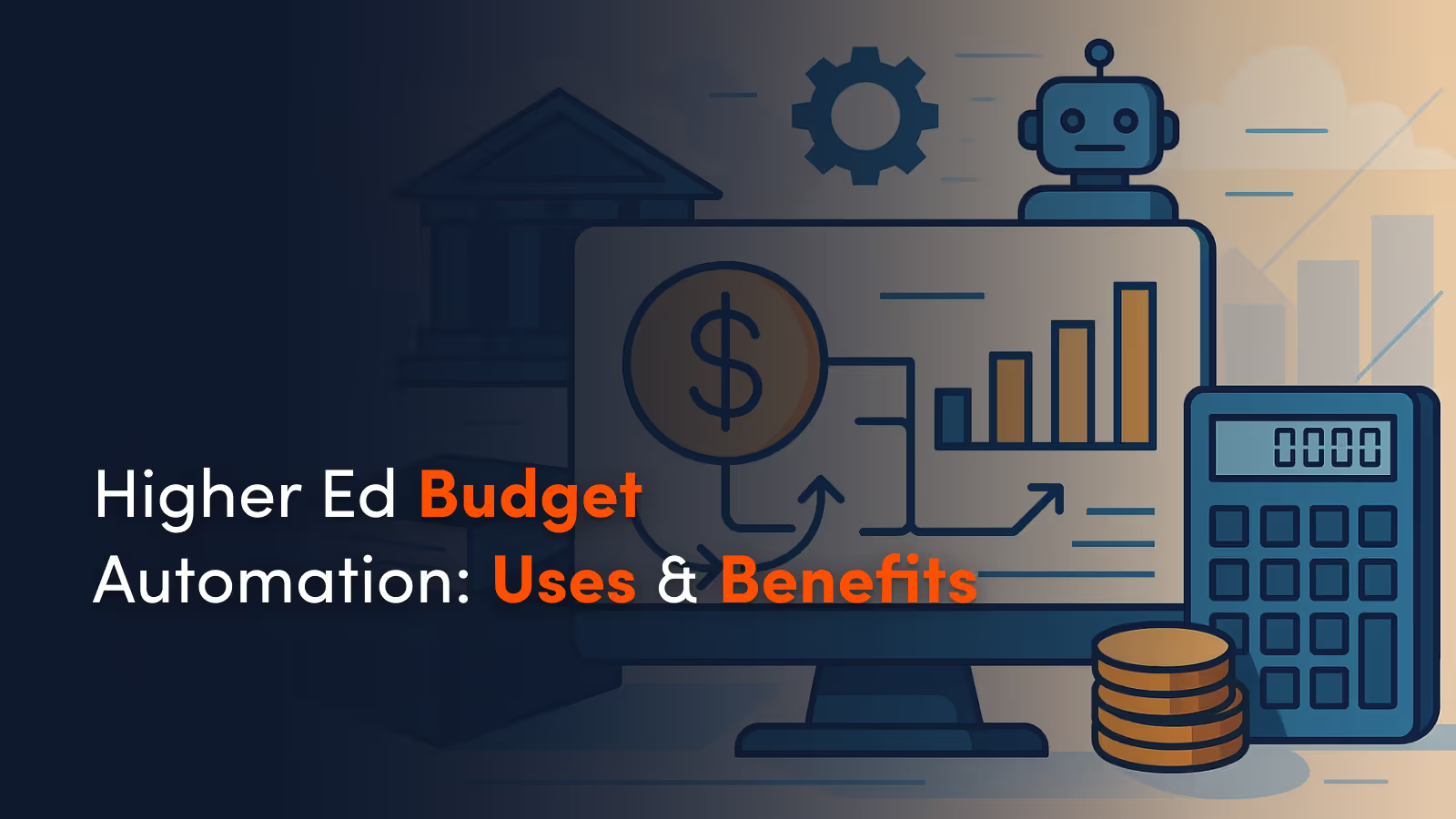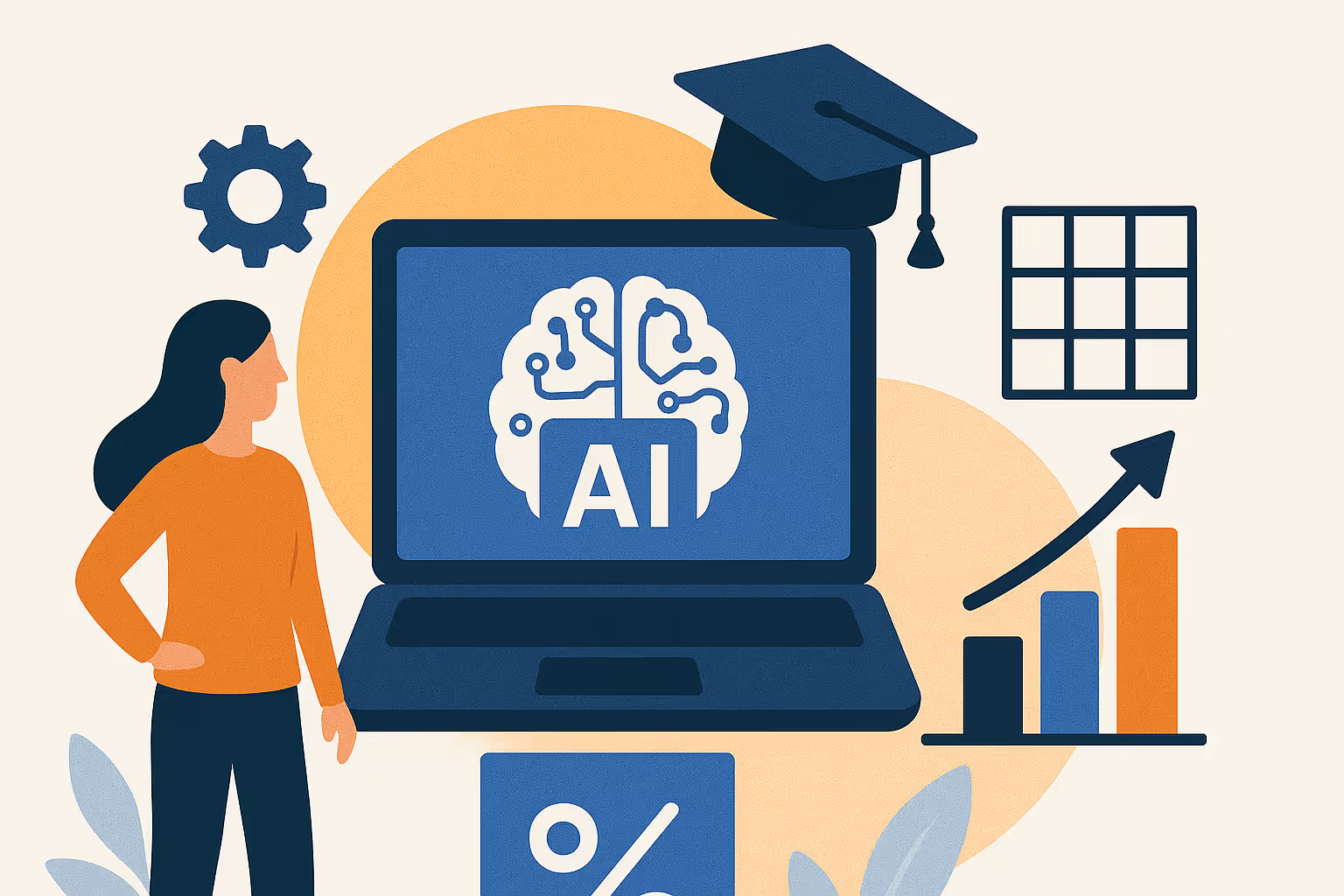About the Blog
Key Takeaways
- Higher ed budget automation leverages AI to streamline financial planning, reduce errors, and improve strategic decision-making.
- AI-driven budgeting tools enable predictive forecasting, real-time tracking, and more accurate resource allocation.
- Institutions save time and money by automating repetitive tasks, allowing staff to focus on analysis and strategy.
- Successful implementation requires assessing current systems, identifying automation-ready areas, and training teams for phased rollout.
Higher Ed Budget Automation: Uses & Benefits
As the financial landscape in higher education becomes more complex, institutions are grappling with rising costs, tighter margins, and increasing demands for transparency. Budgeting in this climate is no easy feat. Manual processes are not only time-consuming but also prone to error—leaving little room for the agility today’s universities need to thrive.
Enter AI-driven budget automation. With intelligent tools that analyze data in real time, predict trends, and automate routine tasks, academic institutions can reimagine how they manage their finances. These tools bring efficiency, accuracy, and scalability—offering a modern solution to age-old budget problems.
This blog breaks down how higher education budget automation is reshaping financial management, improving decision-making, and giving leaders the insight they need to plan with confidence. We'll cover everything from predictive planning to real-world implementation steps, with tips to help you lead the charge.
What Is Budget Automation?
Budget automation refers to the use of AI and other advanced technologies to manage financial planning processes more efficiently. Unlike traditional budgeting—which often relies on static spreadsheets and manual updates—automated systems can process large volumes of financial data, forecast future outcomes, and update budgets in real time.
In higher education, this shift represents a major leap forward. Instead of waiting weeks for budget reports, university leaders can now access up-to-date insights with just a few clicks. Budget automation also allows for cross-departmental collaboration, as cloud-based platforms improve transparency and workflow integration.
By reducing manual input and human error, automated tools create space for strategy. Financial officers can spend less time chasing numbers and more time analyzing trends, asking better questions, and aligning budgets with long-term institutional goals.
How AI Enhances Budget Automation in Universities
Artificial intelligence takes budget automation to the next level. Through machine learning and data modeling, AI can detect patterns in historical financial data to predict future expenses and revenue streams. This allows leaders to plan for different scenarios—whether it’s a dip in enrollment trends or a surge in operational costs.
AI systems also enable real-time budget tracking, eliminating delays in financial reporting. Automation dramatically reduces errors, flagging anomalies as they occur and allowing finance teams to make quicker, smarter adjustments. These tools not only detect overspending early but also help correct it before it becomes a major issue.
Another game-changer? Optimizing resource allocation. AI can pinpoint inefficiencies and highlight underutilized funds, helping administrators reallocate resources to high-impact programs or departments. That’s how institutions start doing more with less—and ensure dollars are working toward their mission.
Benefits of AI Budget Automation in Higher Ed
Implementing AI in budgeting delivers powerful outcomes for colleges and universities. First up is cost savings. By reducing the need for manual processes like data entry and reconciliations, institutions cut administrative overhead and avoid common financial missteps. AI also spots inefficient spending patterns that typically go unnoticed in manual audits.
Time efficiency is another major perk. Repetitive workflows like report generation and budget updates are streamlined, freeing up staff for higher-level strategy and planning. With faster access to accurate financial data, teams can make quick, confident decisions across departments.
Perhaps most importantly, AI-driven tools improve decision-making. Leaders gain real-time insights into spending trends, forecast scenarios, and the impact of their choices. This makes for proactive, data-informed budgeting—where every dollar is aligned with institutional priorities.
Steps Universities Can Take When Implementing Budget Automation
Getting started with higher education budget automation requires a clear, structured approach. First, institutions should assess their current budgeting systems to identify inefficiencies and pain points. This includes examining how data flows between departments, who’s involved in the process, and what tools are currently in use.
Next, it's time to identify areas suitable for automation. Common starting points include expense tracking, budget approvals, forecasting, and report generation. Prioritize the tasks that will deliver quick wins and engage both finance and IT teams early to ensure smooth technical integration.
Finally, universities should train staff and roll out automation tools in phases. Tailored training for different roles helps ensure adoption and comfort with new tools. Begin with a pilot program, gather feedback, and refine the system before scaling across departments or campuses. A phased approach minimizes disruption and maximizes learning.
Conclusion
In today’s financially strained education environment, AI-powered budget automation is more than a nice-to-have—it’s a necessity. By automating repetitive tasks, improving forecasting, and delivering real-time insights, these tools help institutions save time, cut costs, and make smarter decisions.
But adoption is more than flipping a switch. Success requires thoughtful planning, staff training, and a commitment to continuous improvement. As you explore tools and strategies for automation, remember: it’s not just about the tech—it’s about creating a more agile, data-informed future for higher education.
Frequently Asked Questions
What’s the difference between budget automation and financial planning software?
Budget automation focuses on streamlining recurring financial tasks, while financial planning software helps with long-term strategy and projections.
How much does it cost to implement AI budget automation in higher ed?
Costs vary based on institution size and scope, but many tools offer scalable pricing models to fit different needs and budgets.










